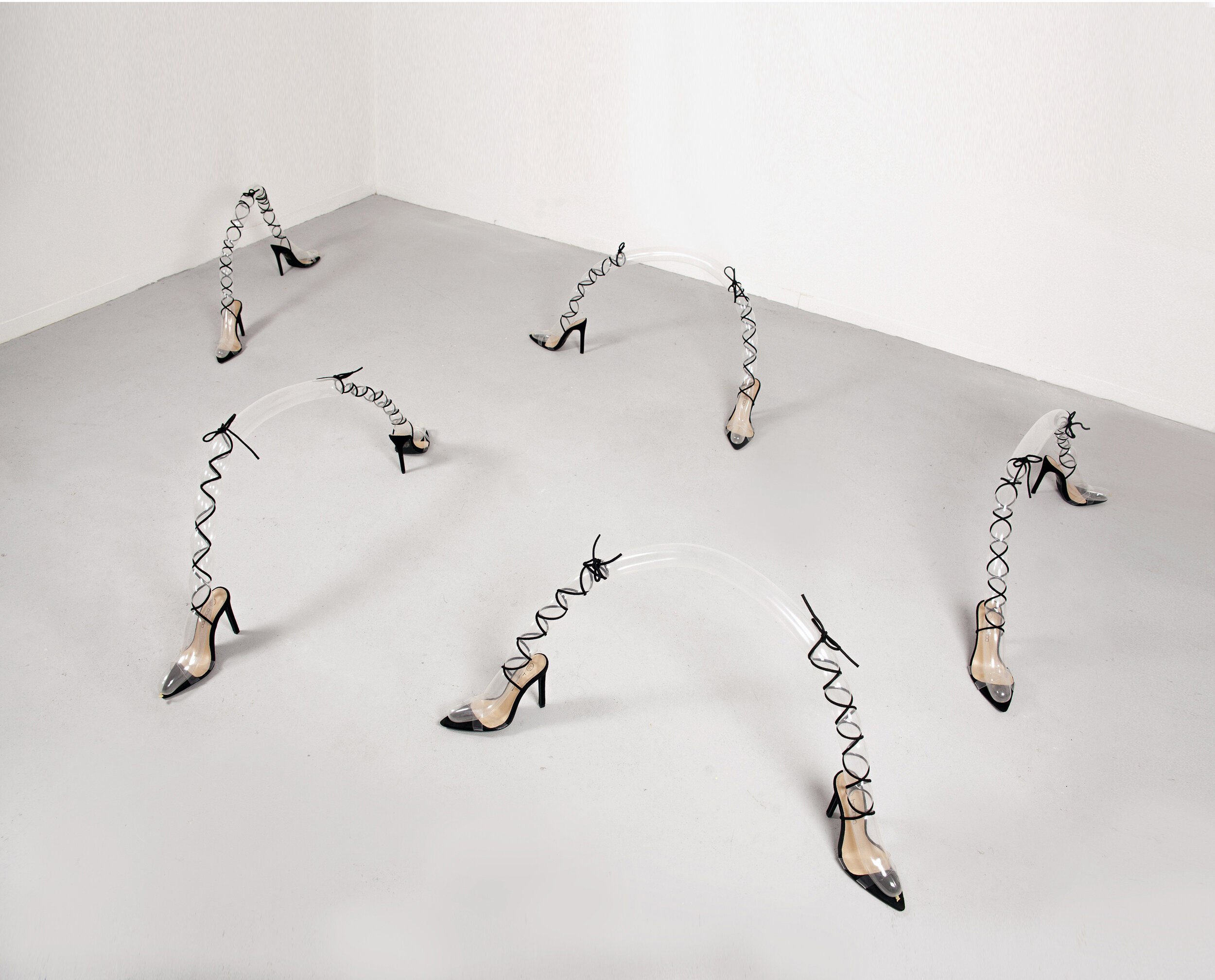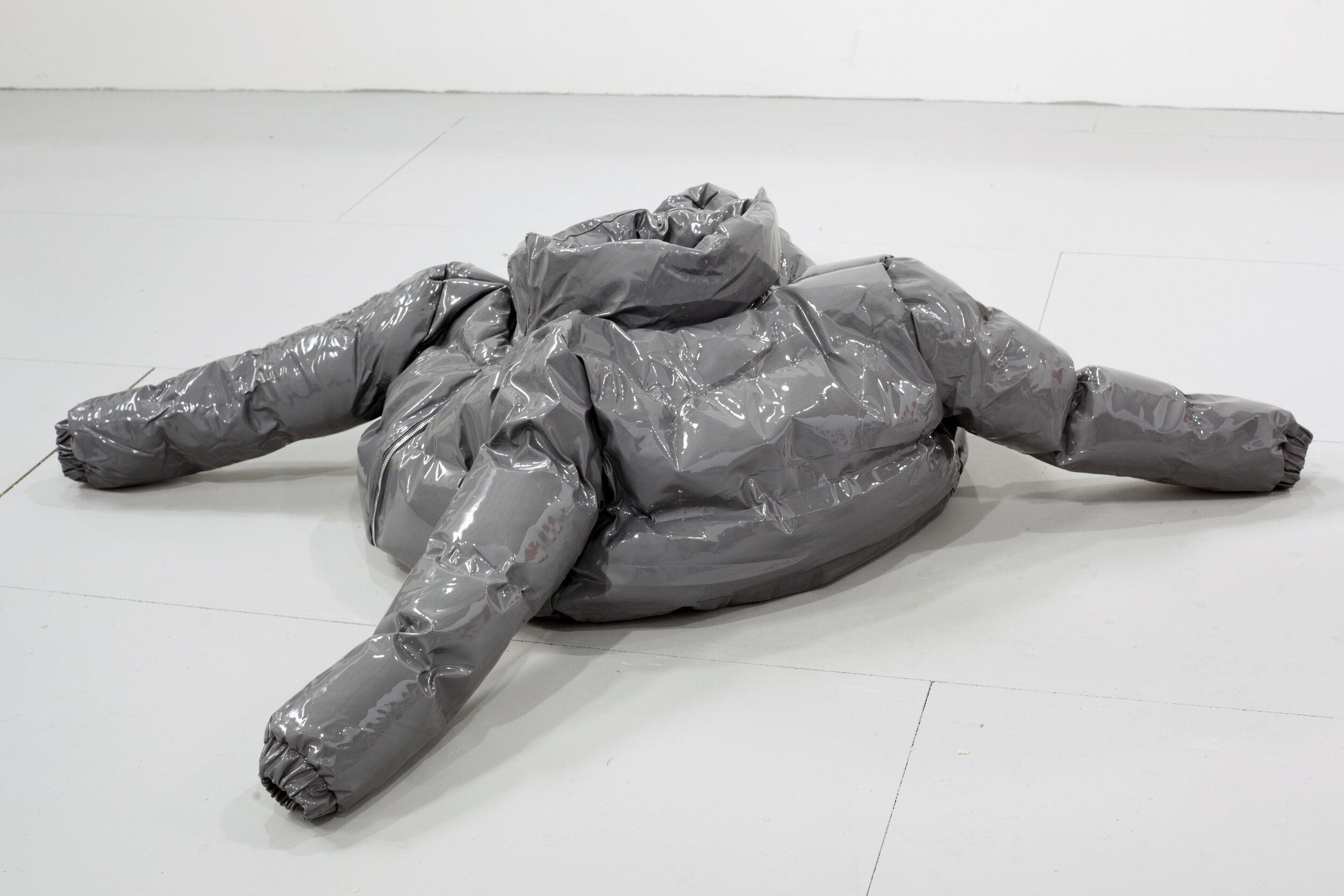Sophie Cunningham

“My interest in using mass-produced objects in my artwork has been influenced by these first-hand experiences - the disposable attitude towards these products I found unsettling. “
Interview by Simek Shropshire
Could you tell us a bit about yourself and your background? Where did you study?
I am from a small city in the West Midlands, a place where there isn't much going on in terms of contemporary art. Despite this, I still developed an obsession with making things and decided to pursue a degree in Fine Art. When I moved to Glasgow in 2011 to study at the Glasgow School of Art, I found living in a city with such a strong artist community incredibly exciting. I studied in the Fine Art Photography department, which was situated in an eerie nineteenth-century hospital building. It was there where I had my first studio, learned traditional photography processes, and was exposed to the works by contemporary artists who pushed the possibilities of photography.
After graduating, I moved to London and threw myself into any job I could get my hands on, from high-street retail to working in the art department in film productions, as well as a creative in the gifting industry. I did this for several years trying to sustain myself. Art school equipped me with a resourceful adaptability - to just throw myself into a variety of different jobs and keep going to make ends meet.
I am now studying on the MFA program at Goldsmiths, alongside working for arts and culture initiatives and as a freelance product photographer.
What inspired you to begin exploring and manifesting the themes of contemporary consumer culture and mass material production in your practice?
Consumer culture is a rich subject matter, and of significant personal interest to me. My first job as a teenager was working at Sports Direct. This consisted of wearing a tracksuit and stocking shelves with cheap products, from novelty Aston Villa keyrings to tennis rackets. My interest in using mass produced objects in my artwork has been influenced by these first-hand experiences - the disposable attitude towards these products I found unsettling.
I started making the series ‘shopping sculptures’ in 2019, when I became focused on researching patterns of overconsumption. Mass produced cheap clothing has become the medium through which I explore this interest, as they represent the throwaway attitude within our western consumer-focused society. Low costs, fast trends and accessible return policies are all orchestrated by brands to make consumers buy things they don't need. I interrogate these consumer systems by using these brands, their products and processes as a framework to make art. I order clothing online and then transform them into sculptures that last the duration of the retailer's return policy. Afterwards, the products are disassembled and returned to the retailer. I want to provoke questions about these consumer systems through recontextualising these same products within my artistic practice. Does changing the status of these clothes into art change our attitude towards them? If so, can the concept of "returnable art" cause us to think differently about our consumption of clothing and other mass-produced, throwaway commodities?
The Kiss, 2021
Power Stance, 2021
Many of your sculptures—assembled from fast-fashion items —are configured into anthropomorphic forms. For instance, with Power Stance, the black heels wrap around transparent balloons as though they are laced around a pair of legs. What do you seek to convey by having these shoes and clothes acquire a human-like animation?
My sculptures use clothing as a material – garments are made to cover, protect and adorn our bodies, so by default my sculptures evoke the impression of a body. By joining many garments together with their original fastenings like zips and buttons, I fuse them together to create strange arrangements and monstrous bodies. The forms are peculiar and unnerving, but because of the use of everyday objects, they still occupy a sense of the familiar.
Through this, I seek to distort this impression of the body into different states, from violent frenzy to playful gestures. I want to make the viewer switch between feelings of humour and horror or power and weakness.
Each clothing item has a different potential. When I receive the clothes and start to arrange them as artworks, it is like an unconventional jigsaw of how I can make them come together. With this I really try to play on the formalities of human gesture. Can I make two jackets kiss? Can I make some heels into an army formation? Can I create a mad frenzy of jackets? Can I make an arachnid-like body from pairs of trousers? That’s the most enjoyable part for me when I am making these works.
Can you elaborate on how you combine the mediums of photography and sculpture in response to the impermanent nature of some of your works?
The clothes I use for my artworks are originally designed with photography in mind. In fast fashion, photos of clothes are promoted on shopping websites and on social media by influencers posting selfies in their new outfits. So, the clothes circulate in a virtual realm, that’s how they are marketed to us. In my art practice, the clothes are fulfilling their purpose to be photographed, but by photographing them as artworks, I subvert this marketing strategy.
My first-hand experience as a freelance product photographer creating ‘throwaway’ shopping images for clients is directly translated into my art practice. There’s great overlap here which I play with a lot. When I am sent products to photograph, I have to think about ways to elevate them to a glossier and more appealing aesthetic. I have an array of props that I use to make the products stand out and look more exciting. This approach is carried into my sculptures, for example, in the use of string to animate clothes like puppets. I like that this works against the traditional modes of sculpture, which are freestanding and robust.
In my series ‘Shopping Sculptures’, the works exist for a temporary duration, like a performance. So, once the sculptures no longer exist, the photographs become the last trace of the work. I am interested in this idea of image status - the image of an out of stock product on a website serves no purpose and is essentially useless, but in my artwork, the photograph gains importance as it ends up becoming the artwork when the process is over.
Shopping Sculptures - Relaxed trousers in grey with front poppers sculpture, 2020
Shopping Sculptures - Puffer jacket in silver sculpture, 2019
Shopping Sculptures - PVC puffer jackets sculpture, 2020
Tell us a bit about how you spend your day / studio routine? What is your studio like?
My studio is in South East London, run by an arts charity called DeptfordX. This is the first time I have not shared a studio. I quite like working alone when I am making, but do miss the casual interactions with other artists.
My processes all intersect and all my days in the studio seem different. As I am always working with different objects, the outcomes of my practice vary day to day. I tend to work in cycles, from researching objects, testing sculptural arrangements and then photographing them and finalising the images.
Most recently I have returned to more traditional sculptural processes, including casting clothing and objects in materials that can melt and distort. For instance, my new work ‘Plastic Shoes Never Die’ is an installation made from wax casts of jelly shoes, which are intended to warp and melt over the duration of an exhibition.
What artwork have you seen recently that has resonated with you?
Because of the pandemic it’s been difficult to see any exhibitions in person. I have mainly been coming across artworks on Instagram and in online discussion groups on my course at Goldsmiths. The silver lining of this is that I have become more engaged with the international artistic community outside of the London Bubble.
I recently read an article about an exhibition last March called ‘Wearables’ curated by Jeppe Ugelvig at Etage Projects gallery in Copenhagen. The exhibition showcased a series of fashion and lifestyle products created by 23 artists and collectives. I enjoyed this exploration into 'ready-to-wear' art and felt that it raised some really exciting questions around the ephemerality of fashion against the permanent nature of an artwork, and what happens when these two characteristics collide. Naturally, the concept interested me as an artist continuing to experiment with the merging of art and clothing cultures.
Is there anything new and exciting in the pipeline you would like to tell us about?
After working alone most of the time in my studio during the winter lockdown, I am excited about a new collaboration I am working towards with the founders of curatorial practice Pa/Do. We are organising a group exhibition called ‘Social Fabric’ 5th - 6th June, within which I will be exhibiting new works among other emerging artists. We spent many hours over Zoom calls and socially distanced walks dreaming up a project to explore the ways art and design can manifest and disrupt consumer systems of clothing.
I will be showing works alongside other Artists Winnie Chan, Silvia Martínez Cerezo and the collective Worn Workshop, co-founded by fashion practitioners Abigail Jubb and Morag Seaton. The location is in a large space in an old gymnasium in Stepney Green, giving me an opportunity to work at a much bigger scale than I have been able to previously. I am also experimenting with video work to accompany each sculpture so as to create a deeper dialogue about the shopping process behind the works. These videos will document the full cycle of the sculptures, from the click of the online shopping basket to wrapping up of the return parcel.
All images are courtesy of the artist
Date of publication: 20/05/21




